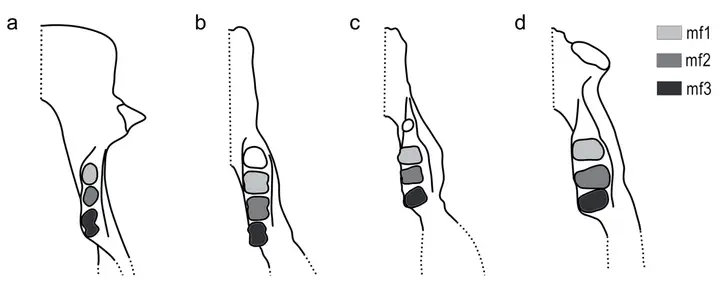Unexpected inhibitory cascade in the molariforms of sloths (Folivora, Xenarthra)

Abstract
The inhibitory cascade (IC) represents a developmental model that explains the evolution of molar relative sizes, originally described in rodents but later validated in several mammalian groups. The IC comprises signalling molecules produced by the first molar buds that inhibit the development of subsequent molars and molecules from surrounding tissues that have opposite effects. Sloths, as xenarthrans, present many peculiarities in their dentition, like tooth and enamel loss, homodonty, and changes in the typically mammalian dental formula. Here, we test the existence of an IC and explore the evolution of the lower dentition in sloths. We studied the variability of molariform proportions in 20 specimens of the Late Pleistocene ground sloth Lestodon armatus. We also analysed molariforms proportions in 53 sloth genera to explore evolutionary trends. Our results show that the lower dentition of most sloths complies with the IC model, despite the difficulties of assessing dental homologies with other mammals. Furthermore, we tested the existence of different patterns among families, obtaining support for models taking mylodontids and orophodontids separately from the rest of sloths. Also, members of Mylodontidae show a unique IC pattern, with a slope considerably higher than 2 and an mf1 ≤ mf2 « mf3 configuration. This pattern could be related to the morphological adaptations to grazing showed by mylodontids during most of their evolutionary history.